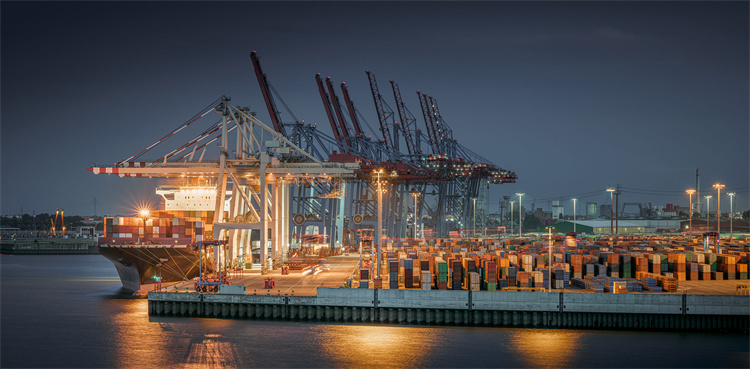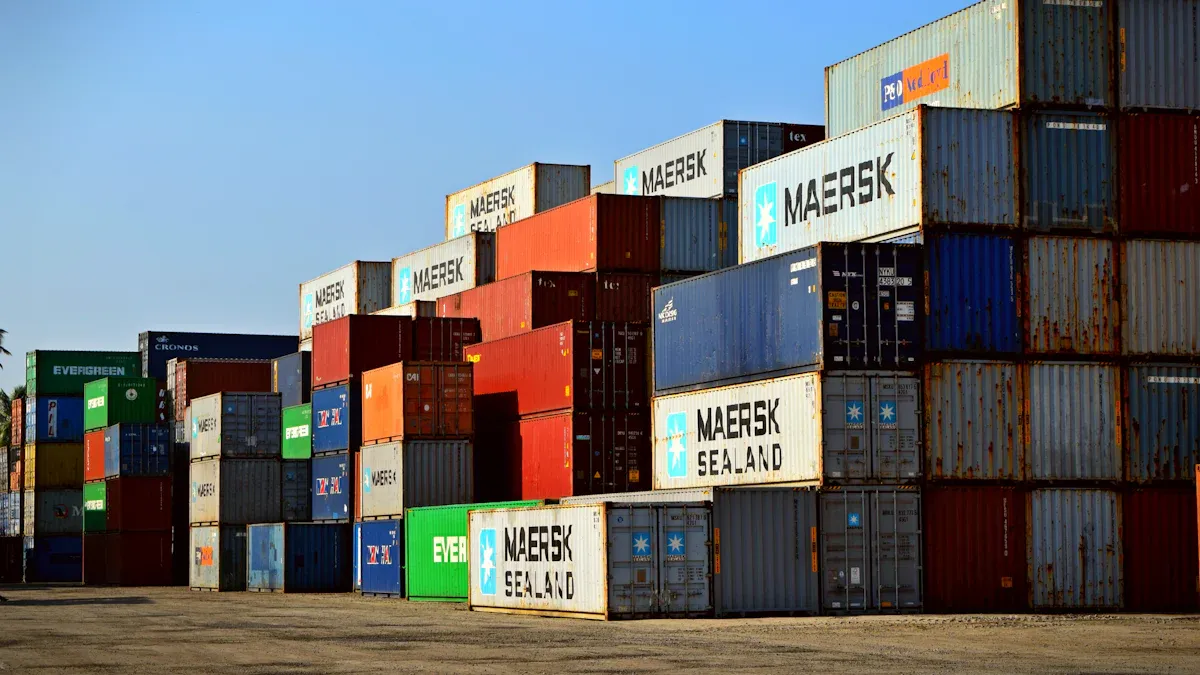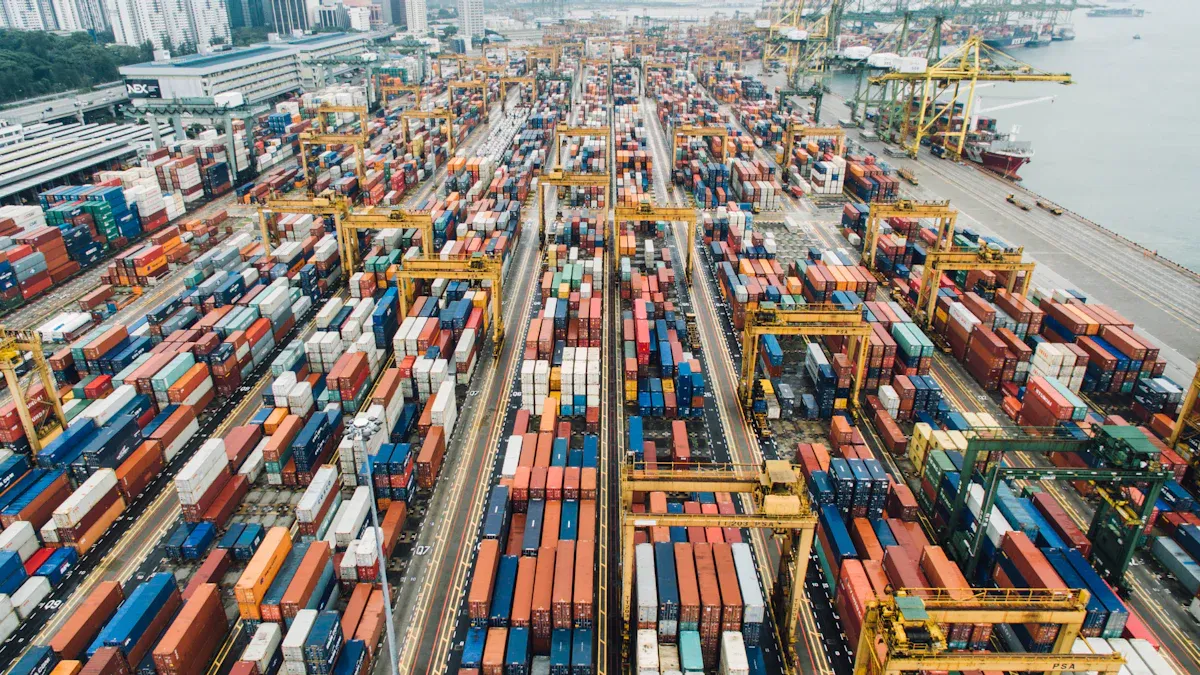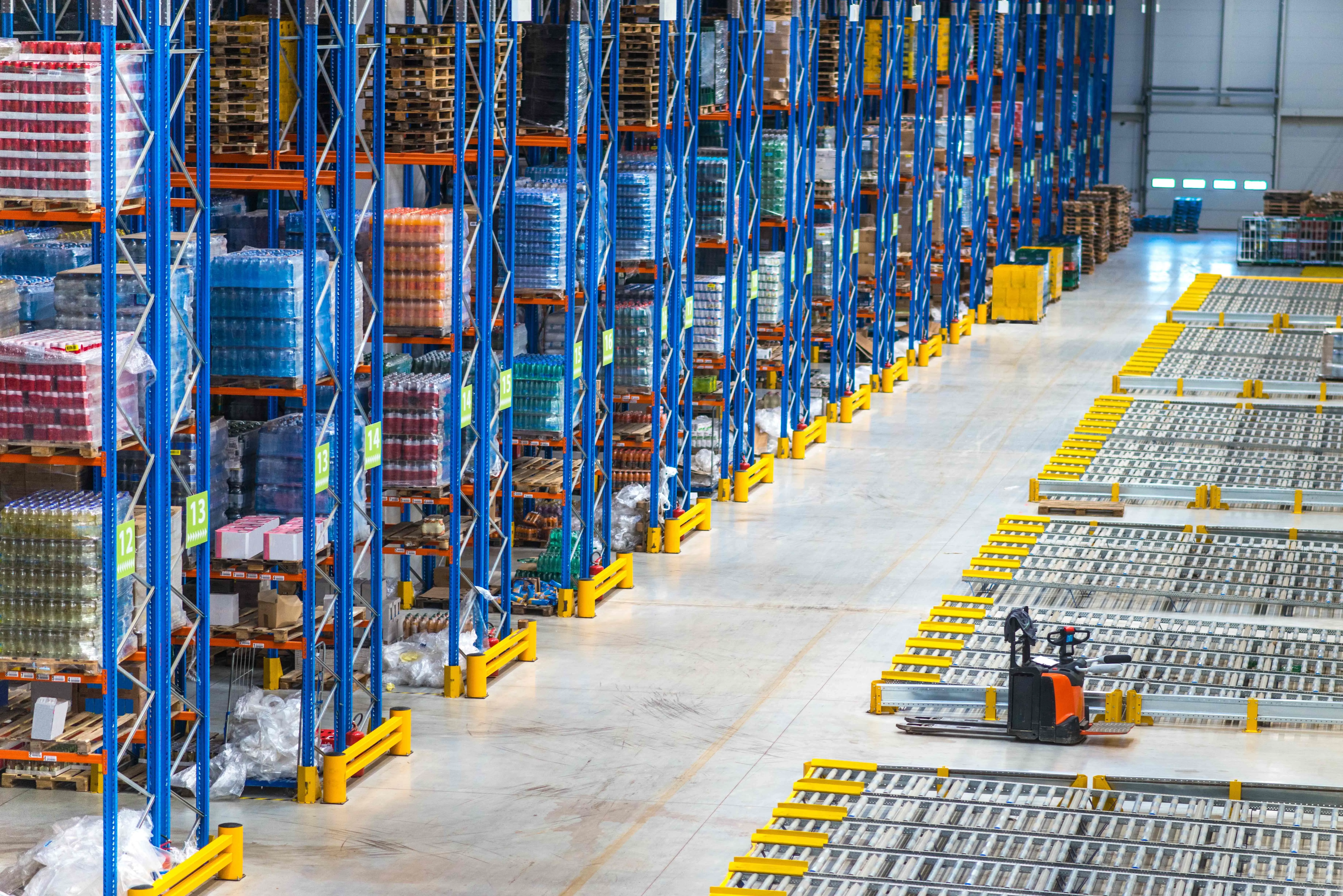How International Logistics Warehousing Powers Global Trade Efficiency

Warehouses for international logistics warehousing play a crucial role in moving goods across countries. They efficiently store, sort, and send products quickly while minimizing waste. By outsourcing logistics operations, businesses can save money on shipping and labor costs. Shipping in large quantities and utilizing smart tracking systems further reduce expenses. This streamlined approach makes it easier for businesses to expand their reach globally.
Key Takeaways
Keeping goods in one place makes managing inventory easier. It also lowers expenses and helps businesses adapt to changes fast.
Improving the final delivery step makes customers happier. Tools like live tracking make deliveries quicker and more dependable.
Placing warehouses near transport centers saves time and money. This helps make shipping faster and more effective.
Core Functions of International Logistics Warehousing in the Global Supply Chain

Centralized Storage and Inventory Management
Centralized storage is key to international warehousing. It keeps goods in one place, making inventory easier to manage. By storing items together, businesses need fewer warehouses, cutting costs. This method also simplifies tasks like sorting, packing, and shipping.
Warehouse systems help ensure accuracy and save time. Top companies reach inventory accuracy rates of 95%, reducing mistakes and waste. These systems also handle returns well, helping recover value from unsold or damaged items. In global trade, this precision is vital to meet customer needs and stay reliable.
Tip: Centralized storage improves inventory control and helps you react faster to market changes. This is especially important in industries like e-commerce, where speed matters.
Distribution and Last-Mile Delivery Optimization
Distribution and last-mile delivery are key parts of global logistics. Improving these steps ensures goods arrive quickly and at lower costs. For example, route planning finds the fastest paths, saving time and money. This boosts delivery success rates and lowers costs per delivery, which are important for performance.
In global warehousing, last-mile delivery often uses tools like live tracking. These tools let you see where shipments are and fix problems early. Companies like UPS and DHL show how well these strategies work with their advanced logistics systems.
Note: Good last-mile delivery improves customer happiness and builds your brand's trust worldwide.
Role of JUSDA Warehouses in Streamlining Global Trade
JUSDA warehouses meet the needs of global businesses. With over 2.5 million square meters of space, JUSDA supports smooth supply chain operations. Their locations near major transport hubs connect easily to air, sea, and land routes.
JUSDA uses smart systems like eVMI and JusLink for real-time inventory tracking. These tools improve visibility and help you make quick decisions. JUSDA also offers services like packing and labeling, which simplify processes and cut costs.
A real example is JUSDA's work with top manufacturers. By using JUSDA's solutions, these companies improved logistics and saved money.
Callout: JUSDA's focus on innovation and efficiency makes it a trusted partner for global trade challenges.
Benefits of International Warehousing for Global Trade
Cost Reduction and Operational Efficiency
International warehousing helps lower costs and improve efficiency. Combining shipments and planning better routes can save up to 25% on logistics costs. Storing goods in one place reduces the need for many trips. This cuts fuel use and labor expenses. Bulk shipping also lowers costs by offering better rates.
Using regional warehouses makes last-mile delivery cheaper by 15% to 30%. Warehouses near transport hubs shorten travel time and improve supply chains. This setup ensures goods arrive faster, avoiding delays and extra costs.
Modern warehouse systems make order processing easier. Real-time inventory tools help track stock accurately, reducing mistakes and waste. Fewer errors mean resources are used better, leading to smoother operations and more profits.
Tip: Choosing international warehousing saves money and improves efficiency, giving you an edge in global trade.
Faster Delivery and Enhanced Customer Satisfaction
Speed is very important in today’s global market. International warehousing places goods closer to customers for faster delivery. A smart logistics system reduces travel time, ensuring quicker shipments. Companies like FedEx and UPS show how good warehouse locations improve speed and cut costs.
Offering choices like express or standard shipping meets different customer needs. For example, Alibaba’s same-day delivery helps customers who need items quickly. Route planning tools and tracking apps also make deliveries faster and more reliable. These tools let customers see updates, improving their satisfaction.
Having multiple warehouses boosts delivery speed and accuracy. Spreading goods across locations meets the demand for fast service. Studies show 56% of young shoppers want same-day delivery, and 61% will pay more for it. Meeting these needs builds trust and loyalty for your brand.
Callout: Faster delivery keeps customers happy and makes your business more trusted in global markets.
Market Expansion Through Strategic Warehousing Solutions
Strategic warehousing helps businesses grow by serving new areas. The on-demand warehousing market is expected to grow from USD 108 billion in 2023 to USD 360.2 billion by 2033. Public warehousing, which made up 48% of the market in 2023, offers affordable options for global growth.
Big companies, holding 61% of the market, use international warehousing for complex supply chains. Flexible storage helps businesses adjust to market changes without big investments. This is key for industries like e-commerce, which made up 36% of the market in 2023. Online shopping growth has increased the need for better warehouses to handle more orders.
The Asia-Pacific region leads the warehousing market with 41% of the share and USD 44.28 billion in revenue in 2023. Fast industrial growth and booming e-commerce in this area show the value of strategic warehousing. Setting up warehouses in key spots helps businesses enter these markets and grow globally.
Note: Strategic warehousing not only helps expand markets but also makes businesses stronger in global trade.
Key Considerations for International Logistics Warehousing
Strategic Placement Near Transportation Hubs
Where a warehouse is located is very important. Warehouses near ports, airports, or highways help shipping move faster. This placement makes it easier to send goods quickly and on time. For example, goods near a port can be loaded onto ships faster. Warehouses by highways make it simple to deliver products to different areas.
Studies show that placing warehouses near transport hubs saves money. It also shortens the distance goods need to travel. Choosing spots close to key routes creates a better delivery system. This is especially helpful for industries like e-commerce that need fast shipping.
Tip: Pick warehouse locations near transport hubs for smoother shipping and better service.
Infrastructure Quality and Accessibility
Good warehouse infrastructure improves how well it works. Modern tools help manage inventory and speed up tasks like packing. For example, automated systems reduce mistakes and save time. Easy access to highways or railways also makes moving goods simpler.
Infrastructure ratings help check a warehouse’s quality. These ratings include equipment, transport options, and system abilities. For instance, a warehouse rated “A” for transport offers reliable shipping. Accessibility ratings also help you pick the right warehouse for your needs.
Classification | |
|---|---|
Warehousing Equipment | A-F |
Transportation | A-F |
Information System Capability | a-c |
Logistics Management Capabilities | 1-4 |
Logistics Service Capabilities | a1-f1 |
Note: Good infrastructure and easy access make global trade faster and more efficient.
JUSDA's Global Network of Warehouses and Its Impact
JUSDA has many warehouses worldwide to meet global needs. With over 2.5 million square meters of space, JUSDA operates in places like China, the U.S., and Vietnam. These warehouses are near ports, airports, and highways for smooth shipping.
JUSDA uses smart tools like JusLink and eVMI to track inventory in real time. These tools help businesses make better decisions. JUSDA also offers services like packing and labeling to make logistics easier. Using JUSDA’s network helps businesses save money, work better, and grow globally.
Callout: JUSDA’s smart tools and great locations make it a top choice for global logistics.
Overcoming Challenges in International Logistics Warehousing
Handling Cross-Border Issues
Shipping across borders can be tricky and cause delays. Each country has its own customs rules, which complicates logistics. Different import-export laws may slow shipments and raise costs. Poor infrastructure in some places also creates problems in supply chains. These challenges make global logistics harder to manage.
To solve these problems, businesses use overseas warehouses. These warehouses in other countries speed up deliveries and simplify customs. For small packages, postal parcel models use national postal systems for smooth shipping. E-commerce companies often choose express delivery for faster service.
Description | |
|---|---|
Overseas Warehouses | Warehouses in other countries to make shipping faster and easier. |
International Express Delivery | Quick delivery services for urgent cross-border shipments. |
International Postal Parcel Model | Uses postal services for small packages across borders. |
Tip: Learn customs rules and pick the right shipping model to avoid delays and save money.
Using Technology for Better Inventory Tracking
Technology helps improve international warehousing. Real-time tracking tools like RFID make inventory more accurate. RFID tags record transactions automatically, reducing mistakes. These tools also help find items faster, speeding up order fulfillment.
Description | |
|---|---|
Real-Time Inventory Tracking | RFID tags track items automatically, cutting errors and improving accuracy. |
Order Picking | RFID helps find items quickly, making order fulfillment faster. |
Total Inventory Visibility | Tracks stock locations globally, improving efficiency. |
These systems give full visibility of inventory across the supply chain. RFID data also improves packing and picking, saving time and resources.
Callout: Real-time tracking tools boost accuracy and help you meet market needs quickly.
JUSDA's Tools for Managing Global Supply Chain Risks
JUSDA provides smart solutions to handle global logistics risks. Its JusLink platform uses IoT and cloud tech for real-time tracking. This system monitors inventory, tracks shipments, and predicts problems. JUSDA also uses AI to improve decisions and keep operations smooth.
For instance, JUSDA works with manufacturers to improve cross-border shipping. Its global warehouses cut delivery times and increase efficiency. Advanced tools like eVMI help manage inventory and adjust to demand changes.
Callout: JUSDA’s tech-focused methods make it a trusted partner for solving global logistics challenges.
Future Trends in International Logistics Warehousing

Automation and Robotics in Warehousing Operations
Automation and robots are changing how warehouses work. Robots move items faster than people, cutting mistakes and saving time. Warehouses using robots see a 25-30% rise in efficiency in one year. Automation also boosts productivity by 25% and uses space better by 20%. Tasks like picking, packing, and sorting become quicker and easier with these tools.
By 2025, nearly 80% of companies plan to use robots and automation. This shows the need for faster and more reliable logistics. Automated systems improve work output by up to 85% compared to manual labor. Using these technologies helps businesses stay strong in global markets.
Tip: Using automation saves money and time while meeting trade needs.
Sustainability and Green Logistics Practices
Sustainability is now important in global warehousing. Practices like better route planning and saving fuel lower pollution and costs. For instance, transport systems reduce extra driving, saving fuel and cutting emissions. Combining shipments reduces trips, making vehicles more efficient and eco-friendly.
Practice | Impact Description |
|---|---|
Transportation Management Systems | Cuts extra driving, saving fuel and lowering pollution. |
Fuel Conservation | Plans routes to save fuel and reduce waste, helping the environment. |
Inventory Optimization | Avoids overstocking, reducing waste and using resources wisely. |
Energy-saving methods and smart decisions also help. These tools track environmental effects and create energy-efficient processes. Green logistics supports a cleaner supply chain and helps the planet.
Note: Being eco-friendly helps the Earth and improves your brand image.
JUSDA's Vision for the Future of International Warehousing
JUSDA sees a future led by technology and sustainability. They use tools like JusLink and eVMI to make operations faster and clearer. These systems track inventory in real time, helping businesses make better choices. JUSDA also focuses on automation to save money and boost efficiency.
Sustainability is a key goal for JUSDA. They use green practices like route planning and shipment combining to lower environmental harm. By mixing innovation with eco-friendly ideas, JUSDA helps businesses handle global trade challenges.
Callout: JUSDA’s smart and green methods keep you ready for global logistics changes.

JUSDA Solutions
To provide you with professional solutions and quotations.
International logistics warehouses help global trade by speeding up deliveries. They use smart tools like IoT to make quick decisions. This improves how they work and lowers risks. JUSDA’s smart ideas, like spreading inventory wisely, keep supply chains running well. Using advanced warehouse plans helps businesses stay strong in global markets.
See Also
Harnessing Robotics in Logistics to Boost Warehouse Efficiency
Transforming Logistics with AI for Future Supply Chains
An In-Depth Look at Leading Global Logistics Firms
Discovering JUSDA's Innovative Warehousing Solutions for Efficiency
Understanding the Importance of Supply Chains in Global Trade
